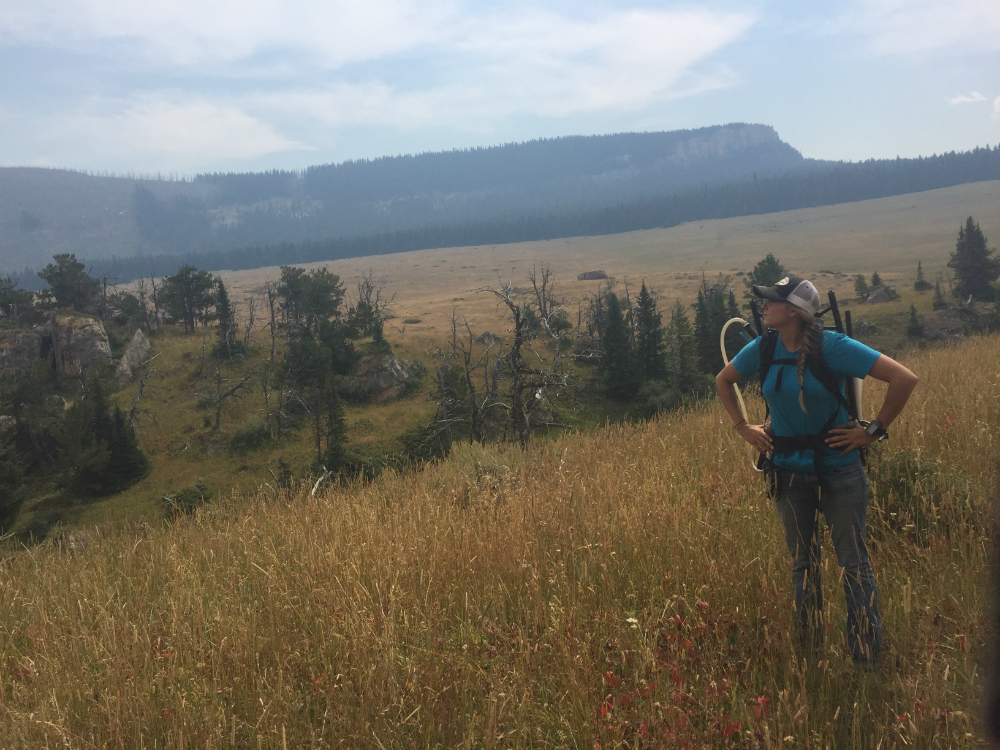County weed directors and supervisors are required to juggle a long list of responsibilities. Just ask Luke Sander, weed and pest supervisor for the Sheridan County Weed and Pest Control District in northern Wyoming. Even after 10 years, there are still some days he finds himself scrambling to keep up.
“Sometimes, I would describe my job as organized chaos,” Sander says. “In my role, I have to wear many hats to try and make things run as efficiently and smoothly as possible.”
Some of those many hats include public chemical sales and recommendations, a litany of specific weed and brush eradication initiatives, managing county and state highway rights-of-way, mosquito control, grant writing and reporting, and much, much more.
Sander’s list of responsibilities is long, and so is the list of challenges that can impede their completion. That’s especially true as it relates to noxious and invasive weed control.
“Many times, it’s tough just to get landowners to realize the benefits of controlling weeds,” Sander says. “Once they do, each landowner has different needs and priorities related to weed control. I try and spread our services to as many of them as possible, but the average landowner wants us to come in and treat very large weed-infested areas via helicopter, then perform follow-up treatments for the next several years using ground equipment. In some cases, we’ve had to institute a first-come, first-served approach.”
That said, most herbicide applications end up being done by landowners. Sheridan County sells them the herbicides and also has rental spray equipment available for them to use. Larger projects, especially those that require aerial spraying, are contracted out, and landowners must pay a portion of the herbicide and application costs, which Sander is always mindful of when recommending herbicides.
“We contract out all the aerial work in the county for large infestations of leafy spurge and invasive annual grasses, as well as the spraying needed to manage the state highway rights-of-way,” Sander says. “Then, we have seasonal crews that we hire to perform certain ground applications, including treating county road rights-of-way. But it’s tough finding reliable seasonal employees who care about how they apply chemicals.”
A Recent Shift In Weed Priorities and Herbicide Recommendations
When it comes to weed control, there are a couple species that are priorities for Sander. He lists leafy spurge as the most challenging, and more recently, ventenata and medusahead have been discovered in Sheridan County and have been taking up more time and resources.
“For years, our most challenging weed species has been leafy spurge — that’s where we have spent most of our time and money with treatments,” Sander says. “Sheridan County sprays between 6,000 and 7,000 acres of private land every year for leafy spurge using Tordon 22K herbicide.”
In areas where leafy spurge isn’t a concern, Sander has been recommending more Milestone® herbicide to replace Tordon® 22K herbicide for general weed control.
“We have sold a lot more Milestone in the last few years and continue to encourage landowners to try it when they need general broadleaf weed control,” Sander says. “Milestone works well for a good portion of the common noxious weeds with little or no damage to native grasses. We like recommending herbicides that are selective, yet effective, on harder to control species.”
Protecting Native Grasses In The Big Horns
A large portion of the infamous Big Horn Mountains run through the western part of Sheridan County. For the last three summers, Sander has led a noxious weed initiative in this pristine area used extensively by recreationists. Here, the goal is to minimize the effects of invasive weeds, especially in high-use areas, and Milestone has been instrumental.
“We treat areas that are very remote, where water is limited,” Sander says. “I moved to a mix of Milestone and Escort herbicides due to the small amount required per acre. We spend most of our resources packing water, so the small volume of Milestone fits our needs. This mix also works well on most weeds of concern, while being easier on the native grasses in the area.”
Preservation of these native grasses is critical, but these lands are not only important to recreationists. The Big Horn Mountains are frequently grazed by cattle in the summer and serve as critical elk parturition areas, where native forage is of high importance to female elk and their babies.
“Here, we receive funding from the U.S. Forest Service as well as the Rocky Mountain Elk Foundation to help with the treatments needed to control invasive weeds in these areas,” Sander says.
Whether keeping county roadsides or elk parturition areas free from invasive weeds, Sander understands his responsibility to the landowners of Sheridan County. And he’s always glad when he can add a new tool to make that job just a little easier.
™®Corteva Agriscience, Milestone and Tordon are trademarks of Dow AgroSciences, DuPont or Pioneer, and their affiliated companies or their respective owners. Tordon 22K is a Restricted Use Pesticide. When treating areas in and around roadside or utility rights-of-way that are or will be grazed, hayed or planted to forage, important label precautions apply regarding harvesting hay from treated sites, using manure from animals grazing on treated areas or rotating the treated area to sensitive crops. See the product label for details. State restrictions on the sale and use of Milestone apply. Consult the label before purchase or use for full details. Always read and follow label directions.


